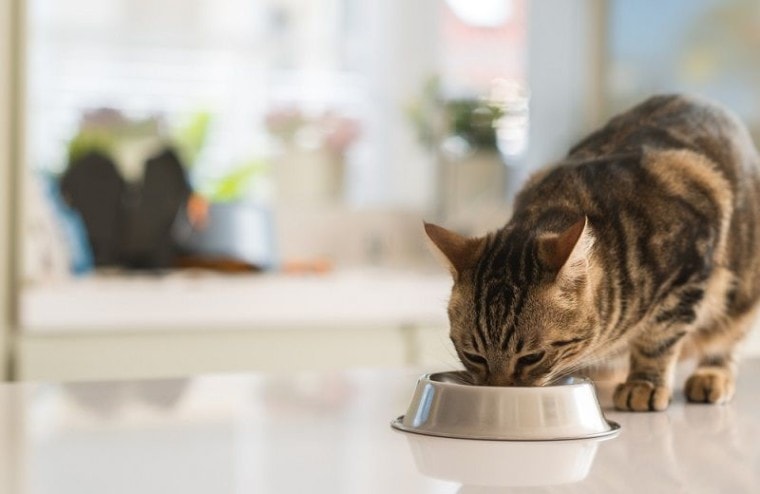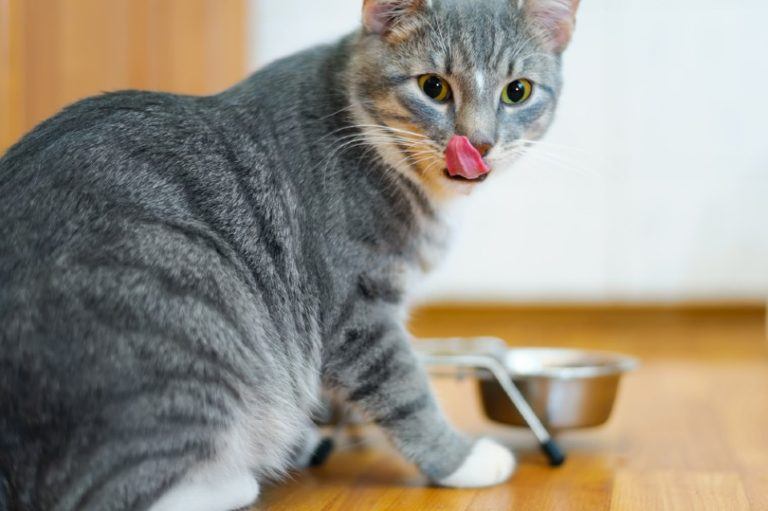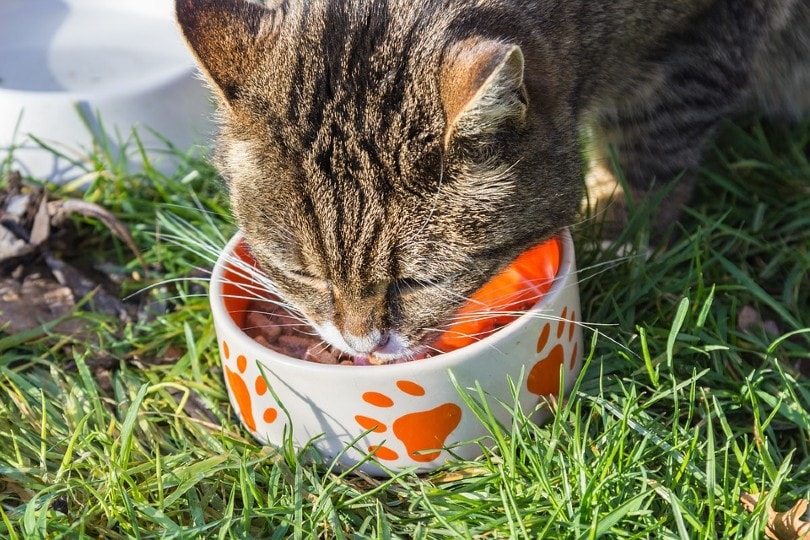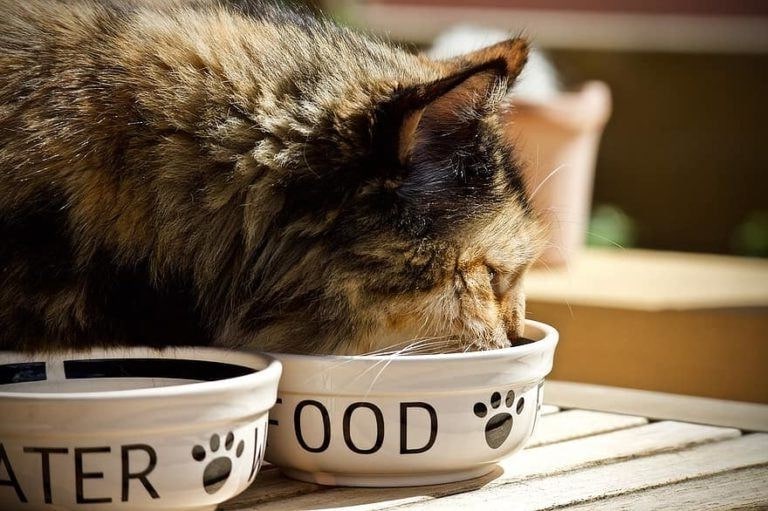
Wet cat food often gets a ‘paws up’ from our feline friends. It is a savory meal choice, spiking the appetite of almost any kitty. Plus, it is easy to eat at any life stage. It has a high moisture content, which most cats lack in their daily diet. As you can see, there are tons of perks.
But because wet cat food is high in calories, you need to portion the meals correctly. So, how much wet food do you feed your cat? Let’s calculate.
Benefits and Downfalls of Wet Cat Food

Wet cat food has its perks, but there are also some things to consider. Here are a few.
What Types of Cats Benefit Most From Wet Cat Food?
Any cat can enjoy wet cat food. But certain felines could use the upsides of this diet more than others.
Why Healthy Weight Is Important

Of course, chubby kitties are super adorable, but health is another story completely. If your cat is overweight, it can cause a whirlwind of complications for your pal, including:
Managing weight correctly is the primary way to prevent these issues from manifesting. If you’re trying to cut back on your cat’s daily intake, it’s important to seek exact measurements from your vet.
How Much Wet Cat Food Does Your Feline Need?

Your cat should ultimately have their food portioned according to their weight. Here are steps you can take to calculate how much your cat needs.
1. Weight
Weight is the number one determining factor when you’re deciding how much wet food to give your cat. You calculate the calorie intake is based on how many pounds your cat weighs.
2. Pregnant/Nursing
When your cat is pregnant, they need all the nutrition they can get. That includes uptake of caloric value for the day. When they’re nursing, they also need a higher amount of nutrients to replenish their milk supply. After all, mothers are feeding an entire litter of kittens as well as themselves.
3. Age
Kittens, adults, and seniors all need a diet based on their life stages. Knowing what age bracket they fall under will help you determine exactly how much to feed them when you are trying to portion out the correct amount of wet food.
4. Health
Specific health issues or restrictions can cause a change in dietary habits. Depending on your cat’s health, it can change how often or how much you feed them.
5. Activity Level
Some cats are extremely active, while others will barely move unless provoked. How many calories your cat burns in a day speaks volumes about how much food they should have. If you have a particularly high-energy cat, they will need to eat more than a lazy cat that naps most of the day.
Complement this information by using our cat calculator here:
The exact amount of calories an individual animal needs to maintain a healthy weight is variable and influenced by many factors including genetics, age, breed, and activity level. This tool is meant to be used only as a guideline for healthy individuals and does not substitute veterinary advice
Additional Factors to Consider
Here are a few other things to think about.
Final Thoughts
Hopefully, with this information and our trusty calculator, you have determined how much wet food your kitty needs. Remember, wet food has several perks, but it does contain a higher calorie count than many dry kibble recipes.
Just make sure that you are portioning your cat’s food correctly to avoid obesity or underfeeding. After all, you want your little buddy to live a long life of unlimited mobility.
See Also:
- Should You Mix Wet and Dry Cat Food? (The Pros & Cons)
- Best Wet, Soft & Canned Kitten Foods – Reviews & Top Picks
Featured Image Credit: Krakenimages, Shutterstock







